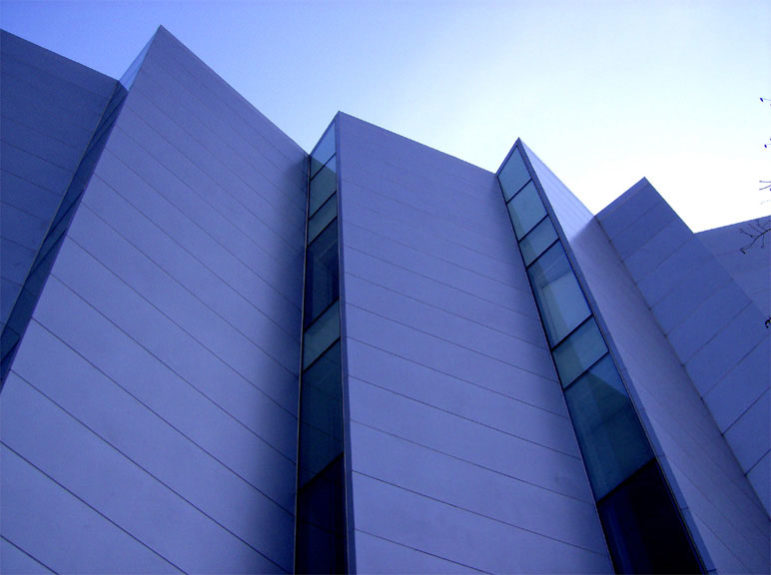
October 2, 2016; New York Times
The New York Times reports that the leadership team at the Bronx Museum of the Arts has been restored. Recent turmoil caused by the very public resignations of its top trustees just as a $25 million capital campaign had been launched has been calmed. The board confirms that it is ready to move forward with the museum’s millions of dollars’ worth of planned renovations and expansions along the Bronx’s Grand Concourse.
The expansion plans were temporarily shaken up due to the recent resignations of chairwoman Laura Blanco, vice chairwoman Mary Beth Mandanas, and four other board members. While the latter four trustees did not specify reasons for their resignations, Blanco and Mandanas blamed their resignations on the board’s operations and lack of transparency, focused on the museum’s director, Holly Block.
Earlier this year, Blanco and Mandanas launched mishandling allegations at Block. According to the N.Y. Times, 26 of the 28 board trustees to be assigned to the board’s executive committee have been elevated to that position within Block’s short tenure, and they are identified as being generally Block supporters. Blanco and Mandanas further argued that Block failed to report major deficits and did not disclose details regarding risks pertaining to a lofty U.S.-Cuban joint arts initiative between the museum and Havana’s Museo Nacional de Bellas Artes. The N.Y. Times reports that this latter accusation is the core reason behind the departures that “kicked up a cloud of controversy just three months after the museum had announced a $25 million capital campaign to renovate and expand,” which includes money for the museum’s endowment.
After years of planning, the Wild Noise project (named after a Victor Hugo poem passage in reference to the chaotic beauty of urban spaces) between the Bronx and Havana’s Museo Nacional was meant to be a groundbreaking initiative to promote artistic exchanges of the sort that had been stifled between the U.S. and Cuba for more than fifty years. The easing of U.S.-Cuba trade policies opened doors to this major project, which would involve cross-boundary exhibitions and a series of public, educational, and artist exchange programs that included a dual language arts publication. As a symbolic gesture, the Bronx museum planned to send a $2.5 million sculpture of Cuban writer and revolutionary hero José Martí to be displayed on Havana’s Paseo del Prado. The sculpture would be a replica of the bronze statue of the leader in N.Y.’s Central Park.
Sign up for our free newsletters
Subscribe to NPQ's newsletters to have our top stories delivered directly to your inbox.
By signing up, you agree to our privacy policy and terms of use, and to receive messages from NPQ and our partners.
The Bronx museum had conducted an investigation into the allegations that Blanco and Mandanas made against Block this past June. The results of the investigations reflected continuing support and secured Block’s position as museum director based on the trustees’ decisions. According to the Times, Block discussed how the latest September 21st board meeting confirmed the elections of a new roster of trustees that includes construction executive Joseph Mizzi as chairman of the board. Criticizing Blanco for creating upheavals and frustrating the board by the highly public nature of the mass departure, Block accused her of having poor communications skills, an inability to understand her fairly newly appointed role as chair, as well as tending to complain publicly about the museum’s operations. Block further accused Blanco of being an ineffective chair, one unlikely to see reelection in September.
In response, Blanco asserts that neither she nor Mandanas considered running for reelection due to their dissatisfaction with the museum’s operations. According to the Cuban-born former entertainment executive from Miami, she and many others were not happy about Block’s focus on global collaborations rather than promoting the works of local artists in the Bronx. She criticizes the Martí statue fundraising efforts as having overshadowed education, free admissions, and other necessary initiatives the museum was working towards funding. However, Block defends the sculpture project by arguing the significance of the fact that Martí lived in New York and that his work and life are studied by students in local schools in the Bronx. She further argues that any additional funding for the sculpture project, which had already drawn in $1.5 million from outside sources, would be directed towards the museum’s education program. Block also defended her efforts to internationalize the network of the small Bronx museum while stating that Blanco’s deficit accusations were inaccurate. The N.Y. Times explains that despite the museum’s $3.5–$4 million annual operating budget, Block believes that, like any other nonprofit, any initial shortfalls are made up throughout the year.
A key argument that Blanco presses is that Block failed to disclose information regarding risk factors pertaining to Cuba ever giving the green light to lend artworks to the U.S. This argument is based on speculations that many Cubans are still suspicious of rejuvenated trade ties, as well as the additional risk of any artwork arriving from Cuba being subject to seizure “to satisfy claims from U.S. citizens whose property was seized during the Cuban revolution.” The Art Newspaper states “the Americans’ claim amounts to more than $7 billion dollars.” In response, Block says that such seizure concerns based on the unresolved claims are pure speculation. In the meantime, despite encouraging vibes driven by the resuscitation of expansion and renovation projects, Wild Noise “has disappeared without a murmur” from the museum’s schedule.
Meanwhile, even as the museum recovers and moves ahead, Manhattanites have been loudly introduced to it and its big plans. Perhaps that’s not such a bad thing. We can only hope that there will be some very honest debriefing about what went awry.—Noreen Ohlrich











